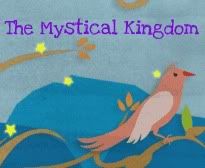Making Pomanders
You can make a pomander with oranges, apples, lemons or limes. In his column in The Herb Companion, Andy Van Hevlingen says that he likes to use small, smooth-skinned tangerines with an attached stem so he can tie a ribbon to the stem. He uses a large needle to prick holes in the fruit, then pushes in cloves, separated into two piles — those with attached heads and those without--so he can make patterns.
Stud the surface evenly and closely with cloves, completely covering the fruit. Don't leave the pomander half finished for the skin will harden once pierced.
Many recipes for pomanders recommend rolling the pomander in a bowl of powdered orris root and cinnamon or allspice. I don't like this (and neither does Van Hevlingen) because it gums up the pattern. It is supposed to increase the fragrance of the pomander but I suspect it has more to do with increasing its magical powers and probably replaces the wheat flour (conjuring abundance) in which the Calennig is rolled.
Von Hevlingen puts his pomanders on newspapers in a well-ventilated location and turns them daily. In a heated house, they should dry within a week or so. You can tie ribbons around then and hang them on the Christmas tree or give them out as New Year's gifts.
There are many variations of the pomander theme. Maggie Oster mentions an early type of pomander made by combining beeswax with herbs and spices, then rolling them into a ball, which suggests another way to make them, although I have not seen a recipe for this method. Helen Farias floated clove-studded oranges in the punch bowl at her fabulous Santa Lucia parties. For these decorative pomanders, the cloves were placed in patterns to make sun symbols. Or you might try making a Calennig by poking grains of rice and sprigs of evergreen into an apple and displaying it on a tripod of chopsticks.
Just remember as you are sitting and poking cloves into oranges, that you are not simply making pomanders, but participating in a sacred craft that has been practised for centuries, that brings together the images of wealth, death and sexuality, all the gifts of the Goddess.
This article first appeared in The Beltane Papers, Issue 8, Autumn/Winter 1995.
You can make a pomander with oranges, apples, lemons or limes. In his column in The Herb Companion, Andy Van Hevlingen says that he likes to use small, smooth-skinned tangerines with an attached stem so he can tie a ribbon to the stem. He uses a large needle to prick holes in the fruit, then pushes in cloves, separated into two piles — those with attached heads and those without--so he can make patterns.
Stud the surface evenly and closely with cloves, completely covering the fruit. Don't leave the pomander half finished for the skin will harden once pierced.
Many recipes for pomanders recommend rolling the pomander in a bowl of powdered orris root and cinnamon or allspice. I don't like this (and neither does Van Hevlingen) because it gums up the pattern. It is supposed to increase the fragrance of the pomander but I suspect it has more to do with increasing its magical powers and probably replaces the wheat flour (conjuring abundance) in which the Calennig is rolled.
Von Hevlingen puts his pomanders on newspapers in a well-ventilated location and turns them daily. In a heated house, they should dry within a week or so. You can tie ribbons around then and hang them on the Christmas tree or give them out as New Year's gifts.
There are many variations of the pomander theme. Maggie Oster mentions an early type of pomander made by combining beeswax with herbs and spices, then rolling them into a ball, which suggests another way to make them, although I have not seen a recipe for this method. Helen Farias floated clove-studded oranges in the punch bowl at her fabulous Santa Lucia parties. For these decorative pomanders, the cloves were placed in patterns to make sun symbols. Or you might try making a Calennig by poking grains of rice and sprigs of evergreen into an apple and displaying it on a tripod of chopsticks.
Just remember as you are sitting and poking cloves into oranges, that you are not simply making pomanders, but participating in a sacred craft that has been practised for centuries, that brings together the images of wealth, death and sexuality, all the gifts of the Goddess.
This article first appeared in The Beltane Papers, Issue 8, Autumn/Winter 1995.








No comments:
Post a Comment
We love hearing from you.....